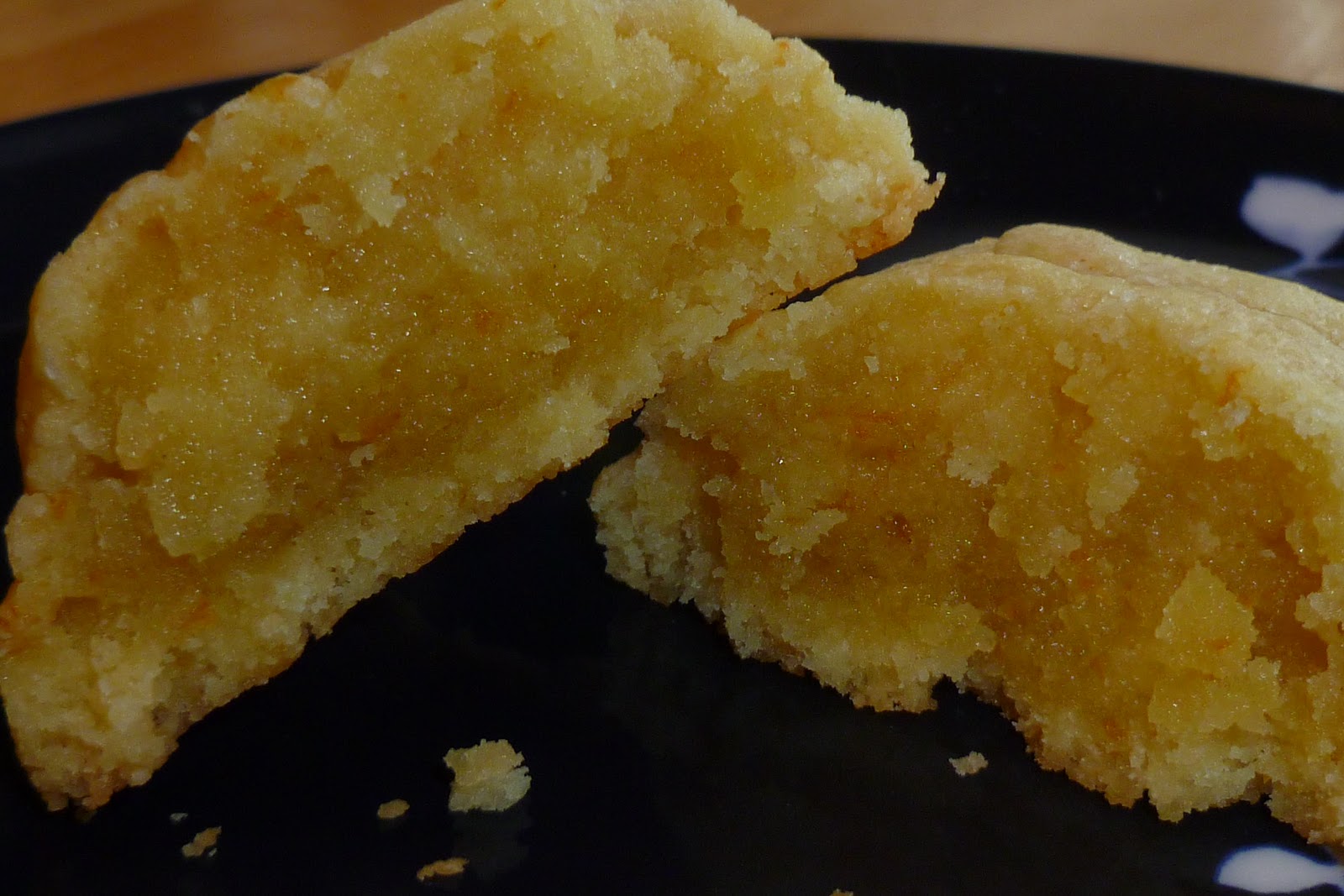 |
| 2nd loaf made from refrigerated dough - had a higher oven spring |
But much as I love bread, I don't make it that often because of the time and effort involved. When I do make it, it's on a rare Saturday when I have time to make the dough, knead it, let it rise, punch it down, let it rise again, shape it, rise, bake, yada yada. In other words, when I have nothing to do all day....which almost never happens. And I still don't knead the dough properly enough half the time. I'm so afraid of overworking the gluten that I don't work it enough. Plus, there's that whole I want to keep fitting into my clothes thing.
 |
| Baked from newly-made, unchilled dough - spread out more |
But one taste of this bread and I forgave myself. As the book claims, it's really easy to make - you literally put all the ingredients in the bowl, mix it with a dough hook on the Kitchenaid, let it sit for a couple of hours then use it. I like to think I braided the challah correctly but the dough was pretty soft (a must for this method of bread making) so when it rose, the braids blended into each other somewhat so the distinctive braids weren't quite so distinctive. The authors say if that happens, try increasing the flour a bit more next time. Still, I loved the taste. I'm not a fan of honey but you can't really taste it in this bread other than as a slight sweetener. I don't like hard crusts on my bread and this one was a bit soft yet a little crunchy when it was warm. I think I ate two pieces before my mind was fully aware of what I was doing. My taste buds had taken over all conscious thought processes.
If you like homemade bread but don't like the big time investment it normally takes, try out this recipe (the challah also serves well as good sandwich bread) and try out this book. I've only made this one recipe so far but I think it's worth the entire book. It does make more than enough dough for a couple of good-sized loaves. I made 2 loaves on two different days and still have some leftover that I think I'll use the rest to make beignets - stay tuned.
 |
| Warm with butter - fantastic |
1 ¾ cups lukewarm water
1 ½ tablespoons granulated yeast (2 packets)
1 ½ tablespoons Kosher salt
4 large eggs, lightly beaten
½ cup honey
½ cup unsalted butter, melted
7 cups unbleached all-purpose flour
Egg wash (1 egg beaten with 1 tablespoon water)
1. Mixing
and storing the dough: mix the yeast, salt, eggs, honey and melted butter with
the water in a 5-quart bowl or a lidded (not airtight) food container.
2. Mix
in the flour without kneading using a spoon, a 14-cup capacity food processor
with dough attachment or a heavy-duty stand mixer with dough hook. If mixing by hand, you may need to use wet
hands to incorporate the last bit of flour.
3. Cover
(not airtight) and allow to rest at room temperature until the dough rises and
collapses (or flattens on top), approximately 2 hours.
4. The
dough can be used immediately after the initial rise, though it is easier to
handle when cold. Refrigerate in a
lidded (not airtight) container and use over the next 5 days. Beyond 5 days, freeze in 1-pound portions in
an airtight container for up to 4 weeks.
Defrost frozen dough overnight in the refrigerator before using. Then allow the usual rest and rise time.
5. On
baking day, line a cookie sheet with parchment paper or a silicone mat. Dust the surface of the refrigerated dough
with flour and cut off a 1-pound (grapefruit-size) piece. Dust the piece with more flour and quick
shape it into a ball by stretching the surface of the dough around to the
bottom on all four sides, rotating the ball a quarter-turn as you go.
6. Divide
the ball into thirds, using a dough scraper or knife. Roll the balls between your hands (or on a
board), stretching to form ech into a long, thin rope. If the dough resists shaping, let it rest for
5 minutes and try again. Braid the
ropes, starting from the center and working to one end. Turn the loaf over, rotate it and braid from
the center out to the remaining end.
This produces a loaf with a more uniform thickness than when braided
from end to end.
7. Allow
the braid to rest and rise on the prepared cookie sheet for 1 hour and 20
minutes (or just 40 minutes if you’re using fresh, unrefrigerated dough).
8. Twenty
minutes before baking time, preheat the oven to 350°F. If you’re not using a stone in the oven, 5
minutes is adequate. Brush the loaf with
egg wash.

















